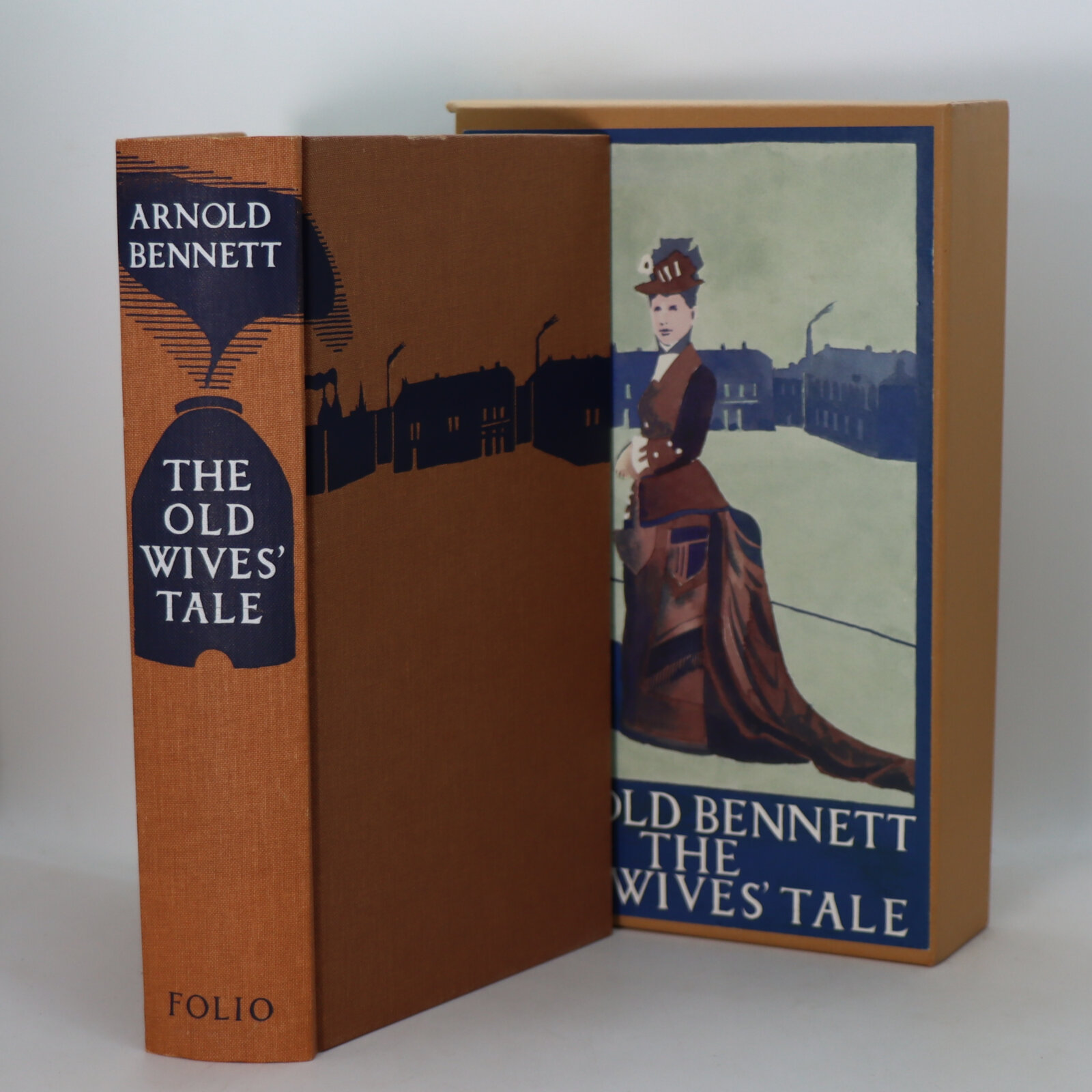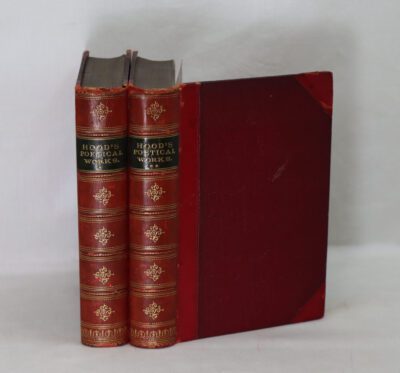The Old Wives' Tales.
By Arnold Bennett
ISBN: 9781425050566
Printed: 2004
Publisher: The Folio Society. London
| Dimensions | 17 × 26 × 5 cm |
|---|---|
| Language |
Language: English
Size (cminches): 17 x 26 x 5
Condition: Fine (See explanation of ratings)
Your items
Item information
Description
In a matching fitted box. Tan cloth binding with white title. Black street image on the boards.
F.B.A. provides an in-depth photographic presentation of this item to stimulate your feeling and touch. More traditional book descriptions are immediately available.
Endorsed by F.B.A. – F.B.A. is endorsing a range of collectable lovingly used books
A true collector’s copy
The Old Wives’ Tale is a novel by Arnold Bennett, first published in 1908. It deals with the lives of two very different sisters, Constance and Sophia Baines, following their stories from their youth, working in their mother’s draper’s shop, into old age. It covers a period of about 70 years from roughly 1840 to 1905, and is set in Burslem and Paris. It is generally regarded as one of Bennett’s finest works.
Bennett was initially inspired to write the book by a chance encounter in a Parisian restaurant. In the introduction to the book, he says
…an old woman came into the restaurant to dine. She was fat, shapeless, ugly, and grotesque. She had a ridiculous voice, and ridiculous gestures. It was easy to see that she lived alone, and that in the long lapse of years she had developed the kind of peculiarity which induces guffaws among the thoughtless. and I reflected, concerning the grotesque diner: “This woman was once young, slim, perhaps beautiful; certainly, free from these ridiculous mannerisms. Very probably she is unconscious of her singularities. Her case is a tragedy. One ought to be able to make a heartrending novel out of the history of a woman such as she.” Every stout, ageing woman is not grotesque—far from it!—but there is an extreme pathos in the mere fact that every stout ageing woman was once a young girl with the unique charm of youth in her form and movements and in her mind. And the fact that the change from the young girl to the stout ageing woman is made up of an infinite number of infinitesimal changes, each unperceived by her, only intensifies the pathos.
Bennett also found inspiration in Maupassant’s novel Une Vie.
Enoch Arnold Bennett (27 May 1867 – 27 March 1931) was an English author, best known as a novelist. He wrote prolifically: between the 1890s and the 1930s he completed 34 novels, seven volumes of short stories, 13 plays (some in collaboration with other writers), and a daily journal totalling more than a million words. He wrote articles and stories for more than 100 newspapers and periodicals, worked in and briefly ran the Ministry of Information in the First World War, and wrote for the cinema in the 1920s. The sales of his books were substantial, and he was the most financially successful British author of his day.
Born into a modest but upwardly mobile family in Hanley, in the Staffordshire Potteries, Bennett was intended by his father, a solicitor, to follow him into the legal profession. Bennett worked for his father, before moving to another law firm in London as a clerk, aged 21. He became assistant editor and then editor of a women’s magazine, before becoming a full-time author in 1900. Always a devotee of French culture in general and French literature in particular, he moved to Paris in 1903; there the relaxed milieu helped him overcome his intense shyness, particularly with women. He spent ten years in France, marrying a Frenchwoman in 1907. In 1912 he moved back to England. He and his wife separated in 1921 and he spent the last years of his life with a new partner, an English actress. He died in 1931 of typhoid fever, having unwisely drunk tap-water in France.
Many of Bennett’s novels and short stories are set in a fictionalised version of the Staffordshire Potteries, which he called The Five Towns. He strongly believed that literature should be accessible to ordinary people, and he deplored literary cliques and élites. His books appealed to a wide public and sold in large numbers. For this reason, and for his adherence to realism, writers and supporters of the modernist school, notably Virginia Woolf, belittled him, and his fiction became neglected after his death. During his lifetime his journalistic “self-help” books sold in substantial numbers, and he was also a playwright; he did less well in the theatre than with novels but achieved two considerable successes with Milestones (1912) and The Great Adventure (1913).
Studies by Margaret Drabble (1974), John Carey (1992) and others have led to a re-evaluation of Bennett’s work. His finest novels, including Anna of the Five Towns (1902), The Old Wives’ Tale (1908), Clayhanger (1910) and Riceyman Steps (1923), are now widely recognised as major works.
Want to know more about this item?

Share this Page with a friend











